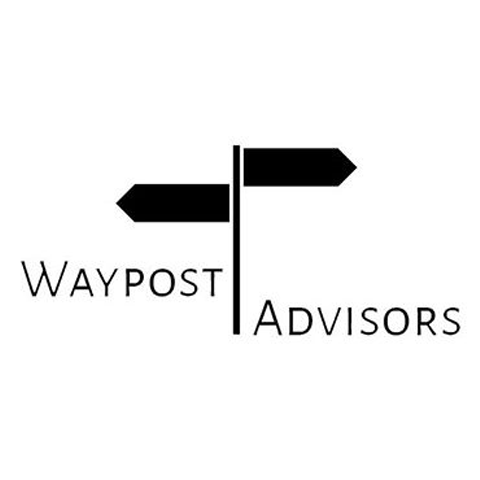3 Tips for Diversifying and Strengthening Your Supply Chain -- Sponsored content from Waypost Advisors
The following is sponsored content courtesy of Waypost Advisors. For more information or to sponsor content, contact Elizabeth Sherry.

By: Rob Kress, CEO, Waypost Advisors
The past 2 years have shown that relying on a single raw materials source is a recipe for disrupted supply chains and an inability to meet customer demand. A robust supply chain is achieved not only by diversity, but also reliability and resilience. An effective procurement and supply chain organization should be one that brings value to the overall organization, which is accomplished by having the right strategic and tactical approach.
We’ve outlined three actionable tips that can be used to consider how to build a more diverse and robust supply chain.
1. Develop a strategy
To build a reliable supply chain, consider a long-term approach. What are your immediate goals and long-term goals? Be specific about these goals and how they are related. Do you have performance metrics in place and which of these metrics are falling behind expectations?
How do you need your employees to proceed to excel at their jobs and make these goals a reality? Asking employees to address these concerns without a long-term objective may have them floundering from one task to the next without clear direction in their work, resulting in a lack of improvement in employee growth.
Developing a strategic supply chain and procurement approach involves having a clear vision of what you need to accomplish and understanding the resources that will be required to deliver that vision. Some things to consider may include:

- Industry insights
- Demand forecasting
- Raw material reliability
- Cost reduction/mitigation
- Strategic vs. transactional

- “Optimal” inventory levels with continuous monitoring
- Do you have appropriate metrics in place to understand impacts?
- Understand what drives needs for inventory
- Communication with finance to understand the financial and operating impact

- Commodity (multiple supplier options, RFQ approach) vs. highly specialized (single-sourced, relationship driven)?
- Is your procurement team better described as strategic sourcing or order placement?

- Disruptions may include shipping delays (or lack of shipping options), unavailability of product by your suppliers, global events that cut off a key supplier, supplier bankruptcy, or rapid price escalation to name a few.

- Risk level vs. cost level
- Is your product development team synced with your procurement organization to take purchasing challenges into account during product design?
- Do you have the resources and expertise required to undertake a change initiative?
To get started, convene a strategy planning group consisting of your company’s executives (CEO, CFO) and leadership from key functions (Supply Chain, Operations, Procurement, Sales/Marketing, Finance). Results often require a company-wide change initiative as multiple functions will need to contribute in order for you to realize true success. Sales needs to understand demand, which drives manufacturing, raw material, and inventory decisions. Underlying it all are the financial impacts that are critical to helping to shape choices and the right metrics are required to ensure you’re making informed decisions. Consider going through these areas to identify gaps in data and existing knowledge as well as areas to prioritize. Assign owners within your organization to ensure the project keeps moving forward and accountability is maintained.
2. Identify the opportunities
We like to follow Peter Drucker and say, “what gets measured gets managed.” The best way to ensure a successful strategy is to have it be data driven. Reliable data and a robust analysis will help you uncover what’s really driving your issues.
Conducting a detailed analysis to identify the opportunities that exist with your organization is critical to execution of any successful strategy. Consider the following when trying to determine where to start:
- Classify your materials to determine how to approach your sourcing strategy. Accurate information and an understanding of your supplier base is critical. This is typically a project led by procurement with the goal of creating a documented analysis to gain an understanding of your raw material base.
- Which materials are single sourced vs. multiple sourced?
- Are your raw materials complex vs. commodities?
- Which are your critical raw materials?
- This serves as the data to drive your sourcing strategy. Identifying the importance, availability, and complexity of your raw materials will enable you to understand how to approach your supply base.
- Conduct a spend analysis (raw materials + spend across suppliers)
- Identify areas for consolidation along with diversification
- Uncover opportunities for cost reductions.
- Ability to leverage spend across your company
- Consolidation of suppliers could allow volume driven price reductions
- Understand price movements across suppliers to prioritize mitigations
- Understand your total spend picture with all suppliers
- Develop industry and supplier assessments for key raw materials
- Anticipate industry changes
- Establish and track expectations with key suppliers
- Understand the quality and robustness of your master data
- Is your current data and analysis an accurate view of your business?
- Are you able to make informed decisions with your current data?
- Analyze your key performance indicators (KPIs), including the accuracy of your demand forecasts
3. Build in resilience
Having a robust supply chain means building a repeatable process and system that has the resilience and flexibility to adapt to future changes. The tips highlighted here shouldn’t be viewed as one-time exercises but instead an approach that emphasizes continuous monitoring and improvement.

- Volume commitments
- Payment terms
- Quality expectations
- Liability
- Communication expectations
- Value added services

- While price is important, other commercial terms can have a significant cash flow impact and you may find additional value to be had
- Establish metrics and key performance indicators (KPI) to create a framework for continuous monitoring and improvement
- Develop a continuous planning methodology and system
- Rolling 12-18 month horizon for demand and supply planning
- Product development aligned with sourcing for new product launches
- Inventory planning strategy aligned with demand plan
- Integrated metrics to drive continuous improvement
About Waypost Advisors

Waypost Advisors is a Minneapolis-based supply chain management and finance consulting firm focused helping middle market companies across the country solve their biggest challenges. Our Advisors are all experienced industry operators that specialize in execution. We know what works because we’ve done it before. Learn more at www.waypostadvisors.com.
The above is sponsored content courtesy of Waypost Advisors. For more information or to sponsor content, contact Elizabeth Sherry.
More reading
The Minnesota Chamber’s Grow Minnesota! program released a report in June 2022 outlining supply chain as a core part of business strategy in Minnesota. “Supply chain challenges: The business response,” drew from a survey of Minnesota businesses. The report highlighted challenges and offered solutions in supply chain affecting Minnesota businesses, including the COVID-19 pandemic and the conflict in Ukraine.
MN Supplier Match is an initiative of the Minnesota Chamber of Commerce’s Grow Minnesota! program that seeks to highlight Minnesota’s robust supply chain and increase business-to-business activity in the state. Minnesota businesses can find local suppliers through our database of over 1,100 companies and can also be registered as a supplier in the database. There is no cost to search the database or be listed as a supplier.
Users can search by industry, location, and business ownership characteristics (e.g., minority-owned, woman-owned, veteran-owned), among other filterable options.
Learn more: The MN Supplier Match database can be accessed here but does require login credentials. Email growminnesota@mnchamber.com or follow the instructions on the webpage to receive free login credentials.




